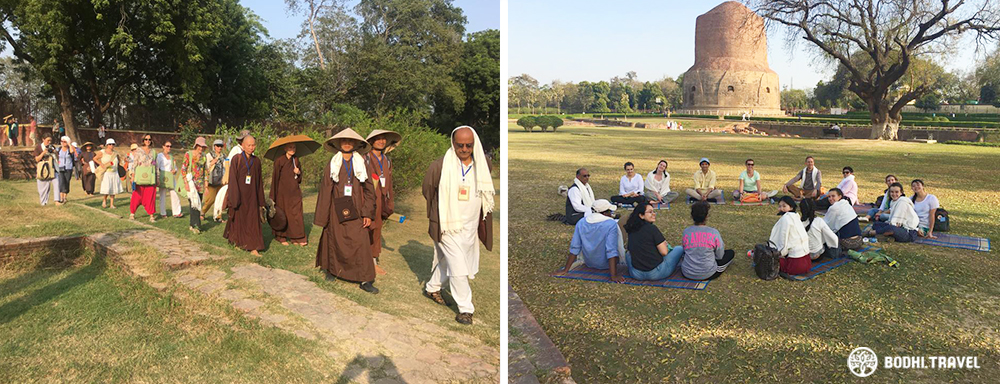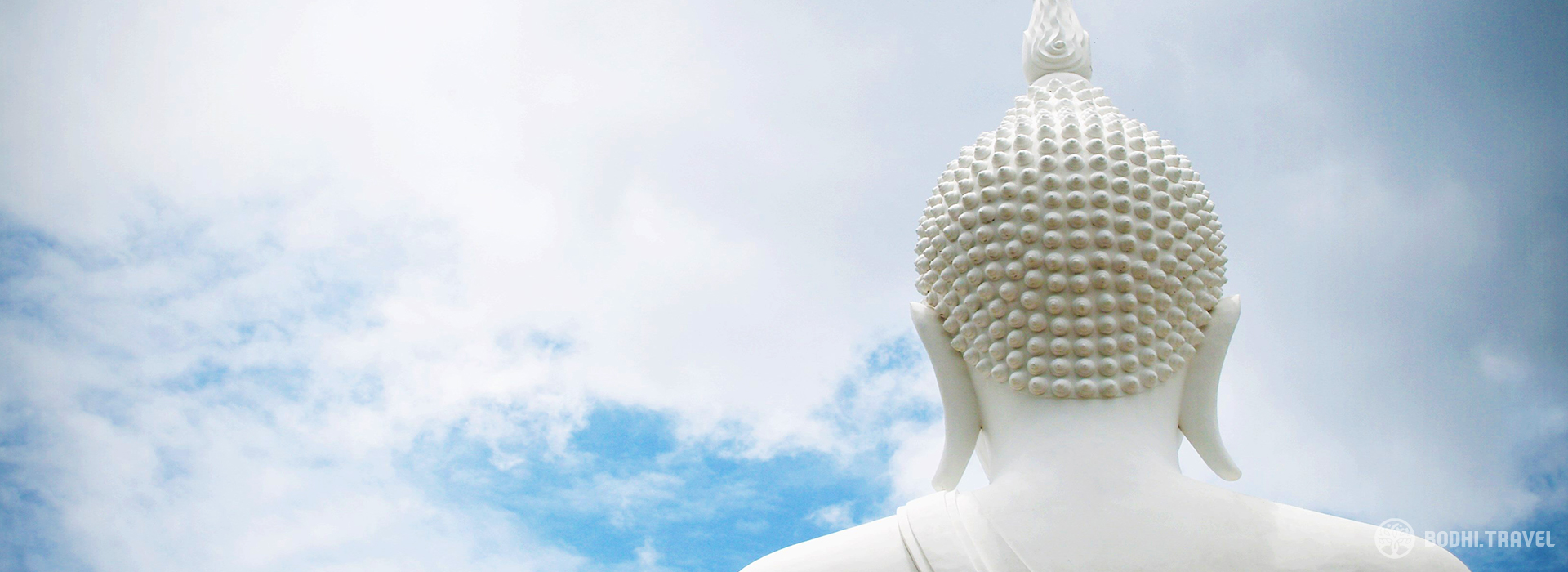
In the Footsteps of the Buddha (2/2)
SHANTUM SETH - Posted on May 30, 2019 - 4,098 Views
In part one of two-part series on The Footsteps of the Buddha, Shantum Seth recounted one of his many pilgrimages on the Footsteps of the Buddha. This week, we follow Shantum as he continued his journey towards Bodh Gaya.
READ PART 1 HERE: https://bodhi.travel/blog/in-the-footsteps-of-the-buddha-1-2
We left for Ragjir, the capital of the Magadgha empire. A 44-km long wall, four metres wide and five metres high in some places, segregates it from the new town and the surrounding area. This wall is from at least the time of the Buddha and acted as an enhanced fortification along with the five hills that enclosed the old capital. The king, Bimbisara was a disciple of the Buddha, as was his son, Ajatashatru.
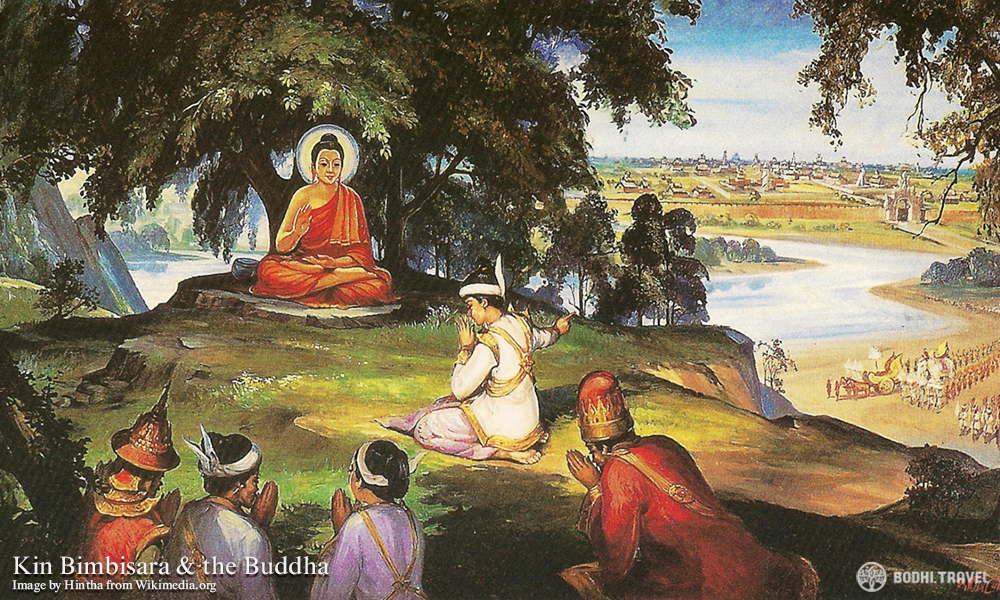
There is so much here that reminds of the Buddha. The bamboo grove –King Bimbisara’s donation to the Buddha which was the first land donated to the sangha; the Karandaka tank, where He bathed. I walked to Vulture Peak, the Buddha’s favourite meditation spot; to walk up the stone path, that had not changed in 2600 years (until a few years ago when the original stone path has been covered by brick and cement ), so I could tread in the footsteps of the Buddha. We walked in meditative silence, to the top. As I watched the sunrise, I knew that it was the very scene that the Buddha saw those many centuries ago. If we can be present, we too can see with Buddha eyes. Sitting on Vulture Peak, we heard the resonance of the Heart Sutra delivered here, ‘Gate gate paragate, parasam gate Bodhiswaha’.
Unfortunately, the only jarring situation was the self-appointed priest who has started his private enterprise and was aggressive and pushy in demanding donations. I felt compassion for the goodhearted devotees who were led through this unpleasant experience. He has now been removed.
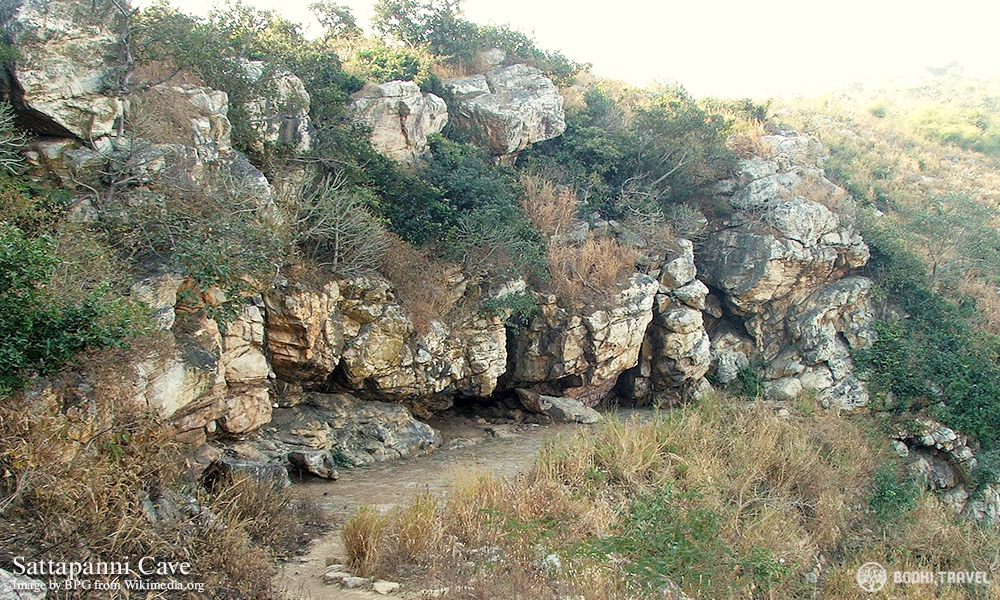
We visited the hot springs Sat Dhara, where the Buddha bathed; the Saptaparni Cave, where the first Buddhist council was held, after the Buddha passed away; and the Buddha’s doctor, Jivaka’s mango grove, where the Buddha spoke about the benefits of leading a spiritual life.
We went towards Bodhgaya. We first walked to the caves on the Dungeshwari mountain near the banks of the Niranjana River, where the Buddha went through a period of asceticism. There is also a Dungeshwari Ma temple here, the cave maintained by Tibetan monks, where Hindu priests also sit during the day. It is half a day’s walk, through the nearly dry riverbed, fields of yellow mustard and other vegetation; we met farmers, village children playing gulli danda and cricket and get a feel for the land that the Buddha walked.
We crossed the river into Bakrour. Here 13-year-old Sujata gave the Buddha some kheer after he gave up the ascetic life and a young boy, Swastik, gave him some kusa grass to make a cushion. The village children of today reminded us of Swastik and Sujata. The emotion of being here was too much for a woman from the US who was part of our travelling sangha who sat down and sobbed. A beggar woman ran to her from across the road and put her arm around her comfortingly saying, ‘You have so much, why do you cry. We have so little and we are contented’.
We entered Bodhgaya itself, where the whole Buddhist world seemed to have established itself. There were Tibetan, Thai, Sri Lankan, Bhutanese, Japanese, Korean, Chinese, Bangladeshi, Indian and Vietnamese monasteries. We meditated at one of the temples in the morning, listened to chanting in another, discoursed with the monks, met with other pilgrims and got a sense of what the Buddha meant to them and to us.

Our final destination was the Bodhi Tree. In its shade, the Buddha was Enlightened. It is our spiritual ancestor and it is wonderful to have a living being as ‘the navel of the earth’, the focus of pilgrimage, the outer journey that leads to inner change. The true reminder of the living Dharma, the original tree, has been replaced by the saplings of the original tree. Some branches are decaying, some branches are sprouting. We see here how the Buddha Dharma died in India in the 13th century and the recent renewal among the Dalits and the elites in India. We see the new shoots developing in the US and Europe. We practised walking meditation. There are six sites around the tree that are significant for the first few weeks that the Buddha spent after He attained Enlightenment.
And so in the twilight, as I sat under the Bodhi Tree and contemplated whether the leaf was the child of the tree, or the parent of the tree (in the form of compost), how the leaf contained the sunshine, the rain, the whole cosmos, that there was no beginning and no end, that the Buddha was only the Buddha in the here and now – the eternal present. I knew that I was blessed to receive the Teachings and able to make this journey each year with fellow pilgrims, to this holy land and walking the footsteps of the Buddha. Children chased the falling leaves and I saw the Buddha walking along the sandy shore of the Niranjana River.
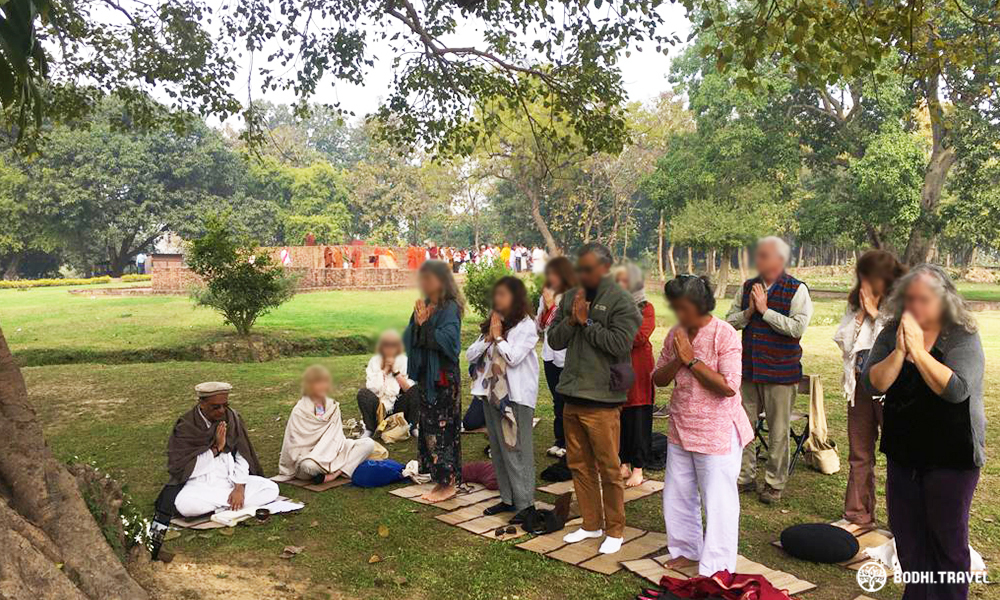
Shantum Seth, Buddhist master, is the guiding teacher of Buddhapath, a tour operator offering specialist Buddhist tours focusing on destinations related to the Life of the Buddha. www.buddhapath.com
Bodhi Travel is Buddhapath’s Singapore partner. We welcome enquiries from parties interested to join Shantum on his journey in the footsteps of the Buddha. Contact us now at [email protected].
